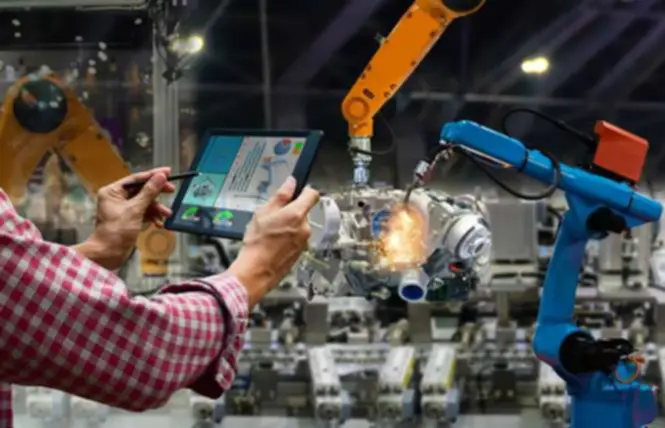Quality Assurance In Manufacturing Qa Best Practices For Smes
Какой язык программирования учить: 3 алгоритма выбора первого языка программирования
August 17, 2023White Label Trading Platform For Online Brokers And Digital Advisors
October 10, 2023Products should also be examined throughout the production process to verify the manufacturing line is operating normally, establish causes of faulty products and clear up any points. A extra complete program, high quality assurance is a process dedicated to stopping defects earlier than they happen. It uses according to the manufacturing based definition of quality tools such as histograms, management charts, and Pareto charts to disclose developments for evaluation; this enables high quality managers to implement course of modifications for enchancment.
- These calculations consider each direct and indirect benefits of quality improvement initiatives.
- A recent Deloitte research discovered that 86% of manufacturing executives imagine clever manufacturing facility applied sciences, including AI, will drive competitiveness in the subsequent 5 years.
- Error-proof manufacturing steps, increase the efficiency and frequency of high quality checks and ensure solely high-quality supplies and components moves downstream.
- However, the importance of craftsmen diminished as mass production and repetitive work practices were instituted.
- Adapting to changing buyer preferences, technological developments, and market dynamics is crucial for SMEs.
Knowledge Collection Methods In Manufacturing
These are all criteria that fall exterior the traditional view of quality as merely testing completed products, however all of them fall underneath the umbrella of ensuring manufacturing quality. The theory is that by increasing quality, prices could probably be lowered and buyer satisfaction increased. This is usually achieved by utilising a set of processes that affirm requirements have been met. While specs and necessities are flowed down from the customer, a business requires policies, processes, and techniques to meet them. So, are you able to have a excessive quality management plan that allows your manufacturing business to develop https://www.globalcloudteam.com/ by producing exceptional products? Quality assurance finest practices get rid of error-prone data entry and promote a single source of fact.
Advantages Of Total Quality Management In Manufacturing
It encompasses a complete approach, focusing on steady improvement in all aspects of the production course of to ensure the best requirements are met. Manufacturing quality Explainable AI management is a multi-layered process that is spread across the complete organization. On the manufacturing facility ground, quality control in manufacturing ensures that product quality is maintained by way of monitoring, measurements, and testing. Quality assurance in manufacturing is the event, standardization, and integration of high quality management practices. Moreover, the use of automation and superior technologies similar to machine learning and artificial intelligence can significantly enhance quality management. These technologies allow real-time monitoring and analysis of production processes, permitting for instant detection and correction of defects.
Quality Control In Manufacturing: Sorts, Instruments & Process
This feat is achieved by enacting strict QC requirements with vendors and suppliers so that materials arriving is assured to fulfill required quality standards. Digital quality control techniques integrate information from a number of sources to supply unified high quality management platforms. These technological solutions transform conventional quality inspection methods into refined, data-driven techniques that enhance accuracy and effectivity. Modern software program for quality management in manufacturing has transformed how facilities handle quality processes. Manufacturing groups use FMEA throughout product design and process improvement levels to attenuate quality risks and optimize production processes.
Enhance Your High Quality Management Practices With Tulip
Furthermore, the idea behind this idea is that the value of a poor deliverable is way larger than the value of guaranteeing a good deliverable from the outset. With handbook reporting, it can be very tough to hint and observe documentation and processes, especially for older stories that might have been archived. Ultimately, you could have extra likelihood of human error and fewer chance of accountability for those errors. Ricciarelli’s new horizontal cartoning machine for long pasta makes use of OMRON’s imaginative and prescient methods to verify the efficient closure of the packaging and perfect OCR/OCV marking. The detect colour marks on a selection of packaging materials including extremely reflective supplies, in addition to help optimize initially set parameters to regulate to modifications in manufacturing heaps.
There are methods of quality management that make use of strategic procedures to guarantee that the correct maintenance and quality testing in production is taking place. Another measure to forestall error is having a system to monitor your manufacturing course of in actual time. ProjectManager is on-line project administration software program that delivers real-time knowledge that will assist you catch problems quickly and resolve them.
Durability is the measure of a product’s lifespan and ability to face up to put on, harm, or decay over time. Durable merchandise scale back the need for frequent repairs or replacements, which saves prices for both the buyer and the corporate. For instance, a sturdy equipment, like a well-made refrigerator, supplies long-term reliability and maintains its performance for years regardless of common use.
Effective quality control in manufacturing is important for maintaining manufacturing quality standards, lowering waste, and guaranteeing buyer satisfaction. It includes numerous techniques, such as inspections, testing, and statistical evaluation, to confirm that the finished product meets the specifications and regulatory requirements. Product high quality pertains to the level of how a product meets buyer expectations and performs its intended function. High-quality products are typically dependable, secure, and environment friendly, which helps construct buyer satisfaction and brand loyalty. Manufacturing high quality is essential for building buyer trust and sustaining a powerful market status. By implementing strong high quality administration systems, companies can scale back waste, improve effectivity, and improve product reliability.
Regular inspections of raw supplies, in-process items, and finished merchandise assist be sure that quality requirements are met at each stage of production. Audits, both inner and exterior, provide a radical examination of the manufacturing processes, identifying areas for enchancment and ensuring compliance with high quality standards. Manufacturing quality is essential because it affects customer satisfaction, brand status, and general enterprise success.
Quality isn’t just about the end product but in addition in regards to the efficiency and reliability of the manufacturing processes used to produce it. It includes a series of planned and systematic actions carried out in a quality system to ensure that quality necessities for a product are met. These solutions provide the instruments needed to effectively manage high quality assurance objectives at every point within the supply chain, from initial evaluation to completed product to distribution. Quality assurance (QA) is essential in production as it ensures products meet specified necessities and customer expectations.
Adherence to its ideas helps to streamline production and make certain the company’s exacting requirements are met throughout the design, improvement, manufacturing, and supply processes. QC includes inspecting and testing merchandise at various phases of the manufacturing process. It checks for defects and ensures the ultimate product meets established quality standards. QC actions may embrace in-process inspections, materials testing, and final product reviews to identify and tackle any high quality issues. Quality control (QC) in manufacturing refers to the processes and procedures to ensure that products meet specified standards and requirements earlier than reaching the consumer. Unlike high quality assurance, which focuses on preventing defects throughout the manufacturing process, high quality control primarily considerations identifying and addressing any points within the final product.
The primary focus of high quality administration is to meet buyer requirements and to try to exceed buyer expectations. Keep studying to discover how implementing whole quality management in manufacturing can rework your operations and result in unparalleled quality and efficiency. Quality 4.0 refers to the implementation of Industry four.zero technologies and practices particularly inside quality management. This includes a variety of advancements like digitalization, IoT, enhanced evaluation, and more. In quality, the increased connectivity and visibility provided by Industry 4.zero are starting to have a significant impression. External failure prices are the potential influence that releasing poor high quality products to prospects can have.
The concept dates back to the early twentieth century, with vital foundations laid by Walter A. Shewhart’s “Economic Control of Quality of Manufactured Product” in 1931. This work marked the beginning of high quality management methodologies that advanced into TQM. Customer feedback is crucial to understanding how merchandise carry out in real-world settings and the place improvements are wanted. By actively listening to clients, firms can gather insights into product strengths and weaknesses and make targeted adjustments.
This feedback loop helps ensure the product stays relevant and aligned with buyer expectations. Advanced know-how, similar to automated quality control techniques, AI-driven defect detection, and real-time monitoring, can greatly improve quality. Technology allows sooner and more accurate detection of points, allowing for fast corrective actions that improve consistency.


